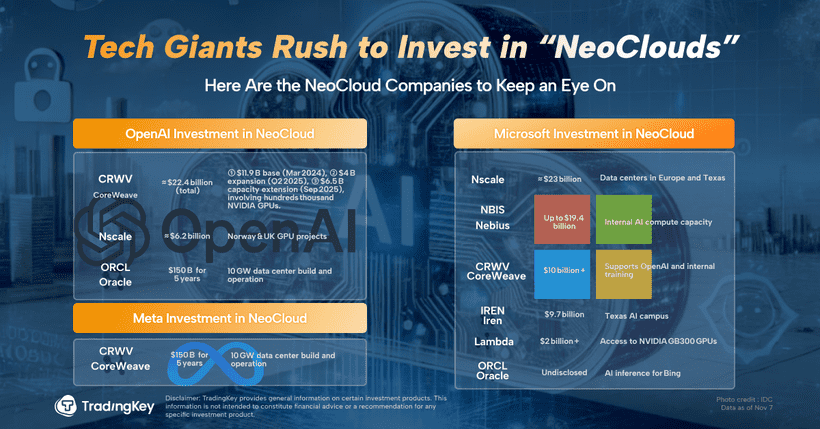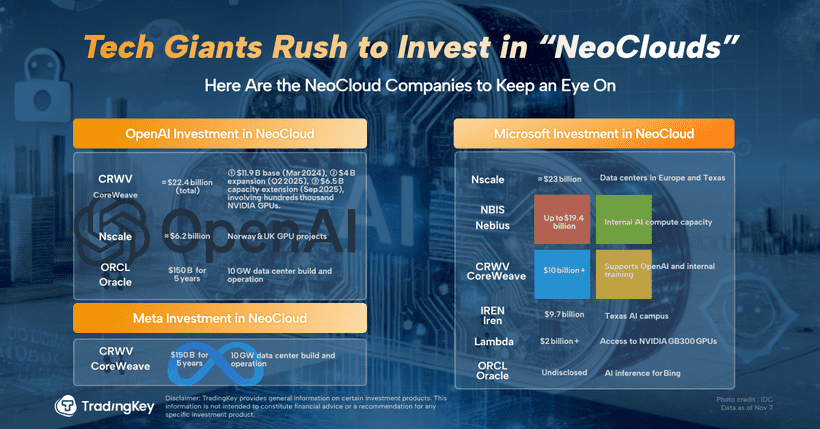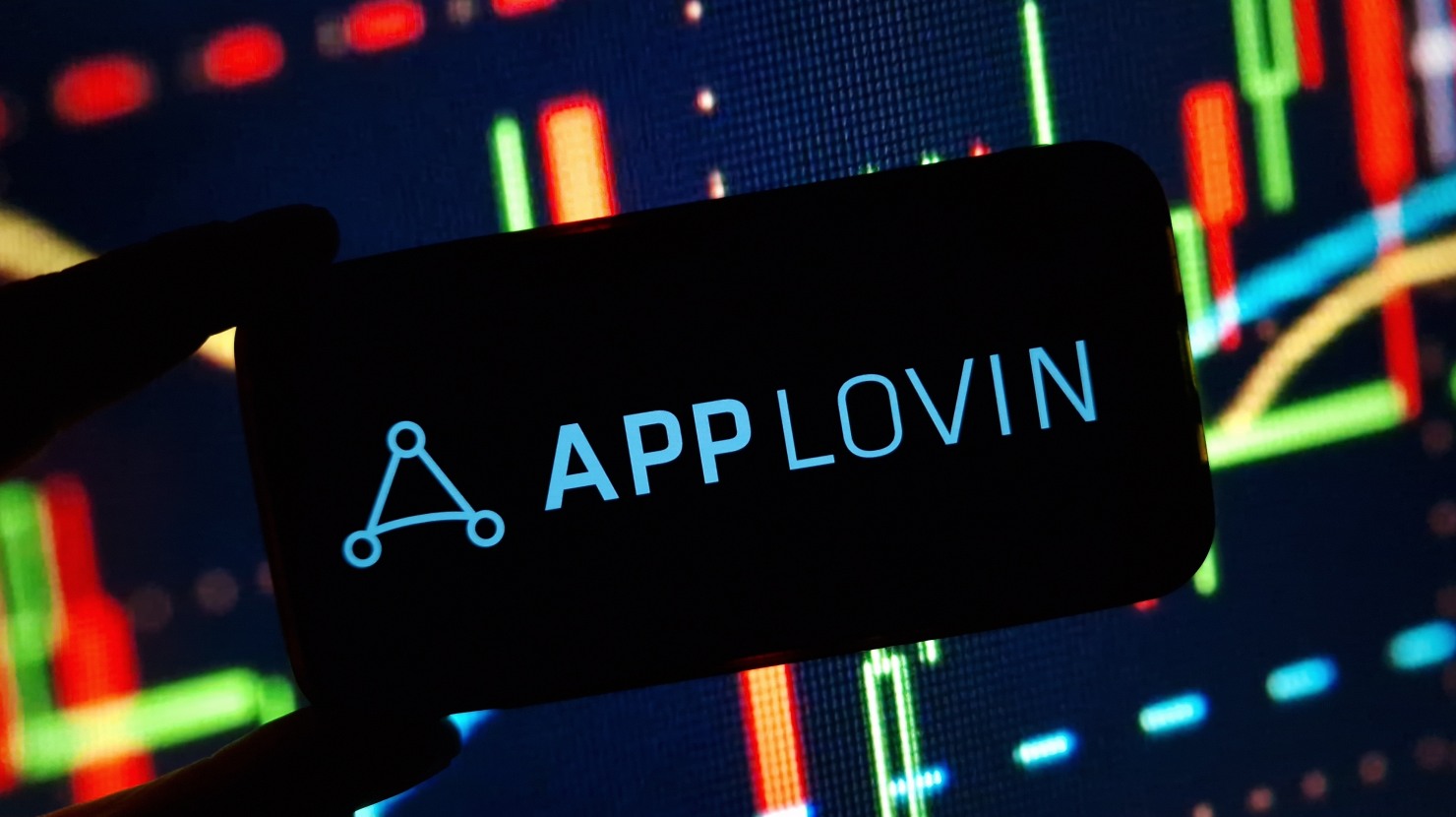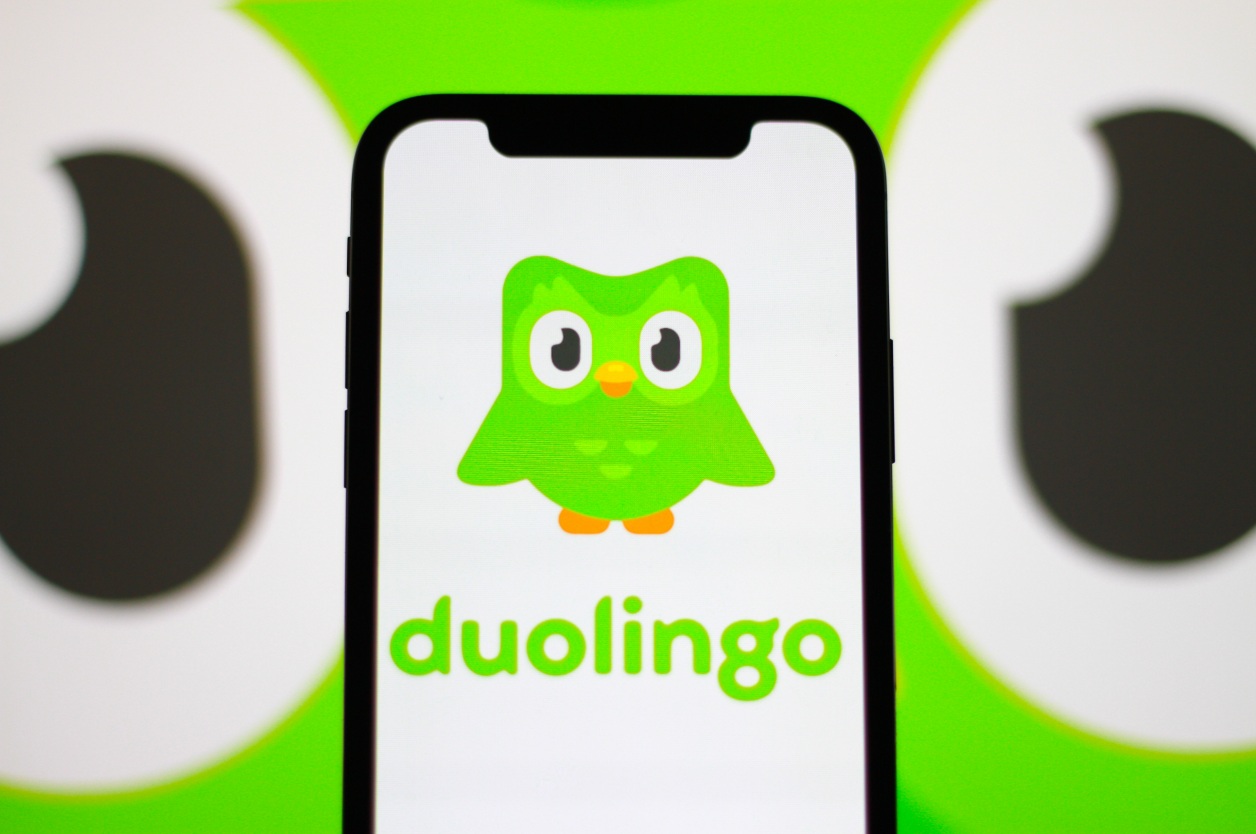Why Tech Giants Rush to Invest in “NeoClouds”


TradingKey - On Wednesday, reports confirmed what many had been watching unfold slowly but steadily: Microsoft is ramping up its investment in next-generation AI infrastructure—what some are calling the “new cloud,” or NeoCloud. Total capital now committed by Microsoft to data center partnerships tied to this strategy exceeds $60 billion.
One of its biggest moves? A $23 billion deal with Nscale, a UK-based startup working on AI-native compute infrastructure. In exchange, Microsoft will gain access to roughly 200,000 units of NVIDIA’s next-generation GB300 GPUs across locations including the UK, Norway, Portugal, and Texas. Since Bloomberg first published a running total of Microsoft’s NeoCloud-related spend in October, the number has nearly doubled.
Just two days earlier—on Monday—Microsoft had announced two more sizeable NeoCloud partnerships, totaling over $10 billion. The partners: Lambda Labs, a U.S.-based GPU cloud provider, and Australian miner-turned-datacenter operator Iren.
Across the broader NeoCloud space, names like Nebius and CoreWeave have also emerged as competitive players—moving fast and raising capital on the back of announced hyperscale deals.
In early September, Microsoft signed a $19.4 billion compute capacity agreement with Nebius. Just weeks later, CoreWeave disclosed a separate order from NVIDIA worth at least $6.3 billion. Under that agreement, NVIDIA commits to purchasing unused GPU inventory from CoreWeave through April 2032.
And in late September, CoreWeave made headlines again—this time with Meta. Their new supply contract: up to $14.2 billion in GPU-backed compute capacity. Each of these announcements has helped push CoreWeave—and the broader NeoCloud thesis—further into mainstream capital markets.
If there’s been a surprise in this trend, it’s what’s not happening: enterprise spending shows no signs of slowing. Despite record capex figures, hyperscalers continue to deepen their AI infrastructure pipelines—suggesting the cycle is not yet topping out.

NeoClouds Rise on Soaring AI Computing Demand
It’s a fair question. Microsoft already operates one of the world’s most mature and globally scaled public cloud infrastructures. So why the need to co-invest with third-party data center specialists?
The answer comes down to one thing: AI workloads, and the compute gap they have exposed.
Unlike traditional cloud service providers (think AWS, Google Cloud, Azure), NeoCloud players offer access to bare-metal GPU compute—meaning users get physical control over the hardware without the additional abstraction layers of traditional cloud environments. These setups allow elite AI builders to maximize utilization, customize software environments, and execute model-scale training workflows with minimal OS overhead.
NeoCloud providers focus exclusively on delivering the most scarce and most powerful GPU resources—with no intermediary services between the hardware and end-user environment. That means no bundled APIs, minimal platform lock-in, and far greater performance per dollar in high-compute scenarios.
For leading AI labs and frontier model teams, the value proposition is clear: hundreds of thousands of GPUs, vertically integrated, and tuned for peak efficiency during parallel training runs. Traditional clouds, by contrast, are optimized for flexibility, not intensity.
But Beneath the Boom—Some Cracks Are Forming
2025 may be the year of financial scrutiny. CoreWeave, arguably the category leader, offers a compelling example of both scale and fragility.
Following Microsoft’s order, CoreWeave secured billions in financing from Blackstone and other lenders—deploying the capital to expand its GPU fleet and lock in more NVIDIA capacity. But this debt-driven growth model is starting to raise flags.
While top-line growth has remained eye-catching—driven by expanding client orders—profitability remains structurally elusive. CoreWeave’s latest financials show accelerating revenue, but nearly zero profits. At the same time, long-term debt has reportedly surpassed $17 billion, with interest costs beginning to weigh.
Microsoft’s approach with NeoCloud vendors tends to follow a familiar pattern: co-develop data center capacity, procure large batches of GPUs, and scale compute throughput over time. Underneath that sequence, however, sits a capital structure that depends heavily on access to debt markets. The broader ecosystem remains predicated on a single assumption—that demand for AI compute will continue to grow rapidly. If that growth proves uneven—or slows—the funding chain beneath it could come under pressure, or fracture altogether.
For now, major cloud incumbents like AWS, Google Cloud, and Azure have yet to mount a visible response. But as NeoCloud providers move further into high-value AI workloads, questions are emerging around if—or when—the big platforms might reassert themselves, whether through acquisition, strategic equity investment, or internal bare-metal buildouts.
In many ways, the NeoCloud model reflects both sides of the current cycle: a breakthrough in compute efficiency, and a structure that embeds its own form of financial risk.







